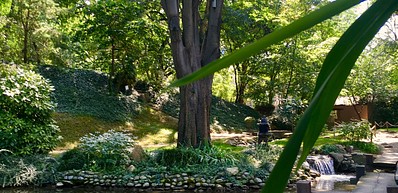
-
![Sava and Danube]() Provided by: Tourist Organization of Belgrade
Provided by: Tourist Organization of Belgrade

Our travel guides are free to read and explore online. If you want to get your own copy, the full travel guide for this destination is available to you offline* to bring along anywhere or print for your trip.
*this will be downloaded as a PDF.Price
€4,95
Belgrade Rivers Danube & Sava
The guide was updated:Situated at the junction of two international rivers, Danube and Sava, Belgrade offers great opportunities for river cruising. The Confluence itself represents one of the most attractive places in the city, just below the Belgrade Fortress, and right next to the Great War Island, an oasis of untouched nature. The river banks never sleep: on numerous floating restaurants and clubs, visitors can enjoy the view, fish specialities, and local beverages.
Useful Information
Digital Travel Guide Download
Our travel guides are free to read and explore online. If you want to get your own copy, the full travel guide for this destination is available to you offline* to bring along anywhere or print for your trip.
*this will be downloaded as a PDF.Price
€4,95

Escape the hustle and bustle of city life with a visit to Belgrade's botanical garden. Founded in 1874 by decree of the Kingdom of Serbia's Ministry of Education, on the recommendation of renowned botanist Josif Pančić, who also became its first manager, this garden offers a tranquil retreat.
Each plant is systematically labelled, and the garden features a variety of areas including a peaceful Japanese Garden, a European garden, a Rock garden, and a Glasshouse. There's also a library and a dedicated Kid's corner. This is the perfect spot for a day spent in nature without leaving the city, allowing you to leave all your worries at the entrance.
Read more

Belgrade Urban Distillery
Belgrade Urban Distillery is the first expert bar dedicated to Serbia's traditional drink, rakija. This sophisticated spirit is made exclusively from high-quality fruits, preserving natural flavours that evoke cherished memories.
Read more
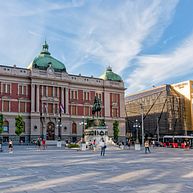
Republic Square
The Republic Square is the very heart of the city, flanked by the National Theatre and National Museum. Its most iconic feature is the statue of Prince Mihailo on horseback, a beloved meeting spot for locals.
Read more
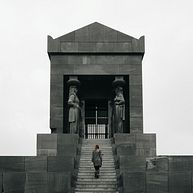
Monument of the Unknown Hero
Located 16 kilometres from Belgrade, Avala Mountain is a true green oasis and perfect place to relax and enjoy nature. At the summit of the 506-metre-high mountain, there is a Monument of the Unknown Hero built by the famous sculptor Ivan Meštrović, on the site of the old mediaeval fortress Zrnovo.
Read more
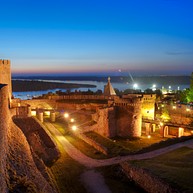
Belgrade Fortress
Humans have inhabited the ridge over the confluence of the Sava and Danube for over two millennia. The core of today’s capital city is the Belgrade Fortress and the Kalemegdan Park. They form a unique spatial entity with clearly visible remains of the Fortress divided into Upper and Lower Town, with two distinct styles. Elements of mediaeval architecture combine with dominant baroque solutions, typical for the 18th century.
The Kalemegdan Park, split in two as the Great and Little Parks, developed in the area that once was the town field. The fortress and the park together represent a cultural monument of exceptional importance, the area where various sport, cultural and arts events take place.
Read more
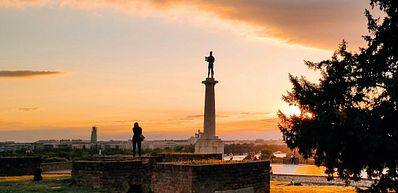
The Victor Monument
In 1928, the famous artist Ivan Meštrović designed a sculpture for the drinking fountain on Terazije. The public was against having a nude male figure set up in the city centre, however. After World War I, the project was cancelled and thus the Victor was set up on Kalemegdan instead. The plato next to the monument is among the most crowded places in the city, where visitors love to take photos and enjoy the view over New Belgrade and Zemun.
Read more
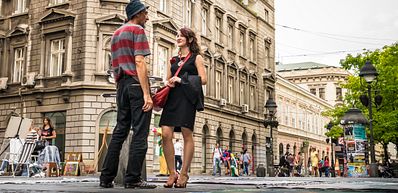
Knez Mihailova Street
Knez Mihailova Street is the pedestrian area that unifies Belgrade's beautiful architecture. It leads to the Belgrade Fortress and Kalemegdan Park on one end, and to Terazije and the iconic Terazijska česma drinking fountain near Hotel Moskva on the other, offering a splendid view of the Sava river valley.
Inside tip: Take a detour to Kosančićev venac, the oldest part of Belgrade outside the fortress. This charming elbow-shaped street is home to Princess Ljubica's Residence, the Building of the Patriarchate of the Serbian Orthodox Church, and the Cathedral Church of St Michael the Archangel, all of which are sure to captivate you with their elegance.
Read more

Belgrade Rivers Danube & Sava
Situated at the junction of two international rivers, Danube and Sava, Belgrade offers great opportunities for river cruising. The Confluence itself represents one of the most attractive places in the city, just below the Belgrade Fortress, and right next to the Great War Island, an oasis of untouched nature. The river banks never sleep: on numerous floating restaurants and clubs, visitors can enjoy the view, fish specialities, and local beverages.
Read more
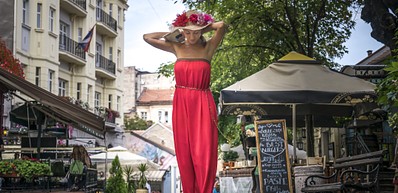
Skadarlija Street — the Bohemian Quarter
Skadarlija, an old bohemian quarter of Belgrade, is alive 24/7. The neighbourhood arose during the 19th century, with a large number of inns (called "kafana"), and since then has been a gathering spot of the most renowned personalities in Belgrade. It is frequently compared to the Montmartre of Paris, both in appearance and atmosphere. In all the inns, a visitor can taste typical Serbian food, drink local wines and listen to live traditional music till the early morning hours.
Skadarlija restaurants have hosted many celebrities over the decades, such as Alfred Hitchcock, Jimi Hendrix, Josip Broz Tito, King Juan Carlos I of Spain, chess player Anatoly Karpov and many others. Best known kafanas are Šešir moj (This old hat of mine), Tri šešira (Three Hats), Dva jelena (Two Deer), Zlatni bokal (The Golden Chalice), Ima dana (There will be days) and Dva bela goluba (Two White Doves).
The present Skadarlija, a short and curved street, is a remarkable Belgrade tourist attraction. Since 1993, the official opening of the summer season in Skadarlija has been marked by rising a "bohemian flag". The ceremony is always attended by celebrities, including popular and opera singers, actors, and artists.
Read more

Ada Ciganlija
Ada Ciganlija, Belgrade's most renowned summer resort, has transformed from an island to a peninsula, becoming the city's largest and most picturesque recreational spot.
The Savsko lake is encircled by over 7 km of Blue Flag-awarded beaches, offering myriad ways to enjoy hot summer days. In summer, Ada Ciganlija turns into a bustling hub, attracting over 100,000 visitors daily (up to 300,000 on weekends) for swimming, sports, or leisurely afternoons in beachside cafés. In contrast, autumn and winter bring a quieter atmosphere, with a scenic promenade lined by cafés and nightclubs, although the lake's ice is too thin for skating.
With more than 50 open-air sports facilities, including a golf course and cable-ski circuit, as well as courts and pitches for various sports and extreme activities like bungee-jumping and paintball, there's no shortage of action. The area's restaurants offer traditional city fare, particularly fish specialities, while bars and floating river clubs provide vibrant nightlife.
Read more

Avala Tower
Standing tall at 204.68 metres, Avala Tower is a significant telecommunications landmark on Mount Avala. Originally completed in 1965, it faced destruction during the NATO bombing of Yugoslavia in 1999 but was rebuilt and reopened in April 2010. Today, Avala is a hub of activity, featuring a restaurant, an ethno-gallery, a souvenir shop, sports facilities, and an outdoor gym. The tower is open year-round, with varying hours for summer and winter. Enjoy idyllic walking trails through the heavily forested Mount Avala, with the best visiting times being spring or early summer for weekend events and live performances. Winter transforms the landscape into a snowy wonderland, offering stunning views of Belgrade from the observation deck on clear days.
Read more
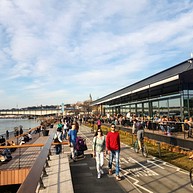
Sava Promenade
Sava Promenade is a lively pedestrian area along the riverside, ideal for families and outdoor enthusiasts, forming a key part of the Belgrade Waterfront development. Stroll through this scenic urban enclave and savour the views of the Sava River, where a blend of cultural and artistic experiences awaits you.
Read more
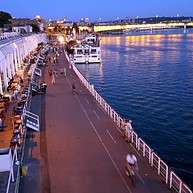
Savamala
Savamala is Belgrade's answer to Montparnasse of Paris, Navigli of Milan, Berlin's Kreuzberg, Lisabon's Bairro Alto , Istanbul's Beyoğlu and New York's Soho. This neighbourhood offers a variety of night clubs, bars and cafes, but also is presented as a cultural and design heart of Serbia's capital.
Savamala is synonymous with Belgrade's urban culture. Among wide streets, river banks and beautiful old facades, many trendy clubs recently opened as exclusive night-life places, make this neighbourhood the hottest district in the city.
Read more

Beton Hala (Concrete Hall)
Beton Hala, located on the Sava riverbank, is the crown jewel of Savamala. What were once warehouses have been transformed into a row of fine dining establishments and contemporary event venues, drawing international attention. With acclaimed chefs, signature dishes, and a blend of industrial and modern design, Beton Hala is a top destination in Belgrade for both nightlife and culinary experiences.
Read more
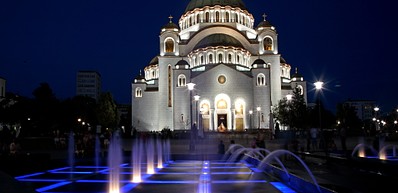
Temple of Saint Sava
The standout feature of the modern Vračar neighbourhood is the Temple of Saint Sava, the second-largest Orthodox church in the world. Its construction has not only defined the Plateau's current appearance but also shaped the skyline of Belgrade, making it visible from most parts of the city.
The Plateau underwent a transformation in the early 2000s, with the addition of fountains, marble access roads with pillars leading to the temple, and children's playgrounds. The existing Karađorđe Monument, the leader of the First Serbian Uprising, remains a key element. The plateau is also home to the National Library of Serbia and Karađorđev Park. Nearby, you'll find the artisan settlement of Gradić Pejton and the bohemian quarter of Čubura.
Read more
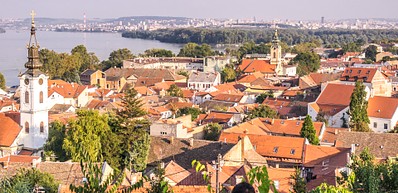
Zemun
Once a separate city, Zemun is now a renowned part of Belgrade, famous for its river taverns, unique atmosphere, and small restaurants specialising in fresh fish from the Danube.
The main street of Zemun is home to the Homeland Museum and the Madlenianum Opera and Theatre. Along the Danube, Zemunski kej is a kilometre-long promenade featuring barge-cafés, an amusement park. The former largest hotel in Belgrade, Hotel Jugoslavija, now hosts the Grand Casino. At night, the barge-cafés become the epicentre of nightlife, staying open until dawn.
Gardoš Tower, also known as Millennium Tower, stands as Zemun's most iconic symbol, offering panoramic views of Belgrade and a tranquil escape from urban noise. The neighbourhood has retained its authentic charm, with narrow, mostly cobbled streets and individual residential houses.
Read more

The Royal Palace
The Royal Palace was built between 1924 and 1929, on orders by King Alexander I, as the official royal residence. It is designed in the Serbian-Byzantine style, surrounded by pergolas, park terraces, pools, a pavilion, and a concert terrace. Located on the ridge of a hill, it provides a magnificent view of Dedinje, the Košutnjak forest, Topčider, and Avala.
Within the same complex, a residence for sons of King Alexander I had been built and named the White Palace. Its salons are arranged in the styles of Louis XV and Louis XVI, and it contains a valuable art collection including notable artworks by Rembrandt, Fromentin, Vouet, Poussin, Bourdou, Jakšić, Meštrović and many others. It also contains the Royal Library that once housed around 35,000 books and the Ceremonial Dining Hall set up in the Chippendale style.
The palace complex also contains the Royal Family Church modelled after the Church of the Monastery of St Andrew on Treska in Macedonia. Palaces are open for visits on weekends, during the tourist season, as it is a home of His Royal Highness Crown Prince Alexander of Serbia and his family.
Read more
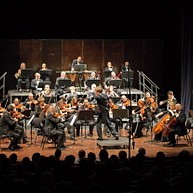
Kolarac
The Kolarac Foundation, housed in a splendid building that also serves as the People's University, has been a bastion of knowledge, culture, and music since its construction in 1932. Its Music Centre is a key promoter of musical culture in Belgrade, with the Concert Hall hosting over 250 concerts annually.
The Foundation's lectures and programmes are dedicated to the promotion and popularisation of culture, science, and art. By offering a diverse array of events, it nurtures both its own cultural identity and that of other nations, thereby contributing to the development of a culture of awareness.
Read more


